#Sethusamudram project
Explore tagged Tumblr posts
Text
I got the Sethusamudram Shipping Canal Project. Neat.
What if when we were born we were each assigned a Wikipedia page like a social security number would that be fucked up or what
126K notes
·
View notes
Text
Our Great State TAMILNADU
GO AND EXPLORE THE MINDBLOWING PLACES IN TAMLNADU
CHENNAI
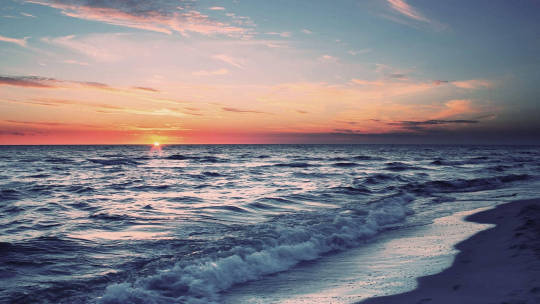
Chennai is the capital of Tamil Nadu, which is located on the Coromandel coast of the Bay of Bengal in southern India. Madras was the name given to Chennai in the past. The “Gateway to the South” is another nickname for the city. The city of Chennai is surrounded by three rivers and numerous lakes. This city offers a number of lovely museums that are a must-see for anyone planning a trip to Chennai. Also Chennai is home to one of India’s oldest medical centres. The city is home to more than a third of India’s automobile sector. Let’s read more about it.
YERCAUD
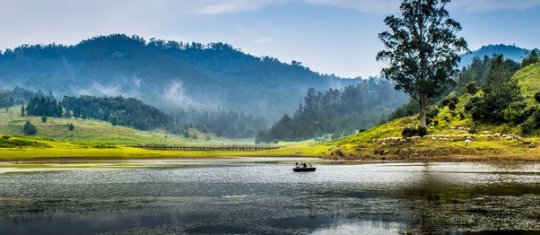
Yercaud is a hill station near Salem, in the Servarayan range of hills (anglicized as Shevaroys) in the Eastern Ghats. It is at an altitude of 1515 metres (4969 feet) above the see level. The total extent of Yercaud Taluk is 382.67 Sq.kms. including Reserve Forest. The entire Taluk is a Township. Yercaud has also a Panchayat Union with its Head Quarters at Yercaud and its Jurisdiction is the same as for Yercaud Taluk. Popular as the “Poor man’s Ooty”. Yercaud is one of the low cost hill station destination in India.
RAMESHWARAM
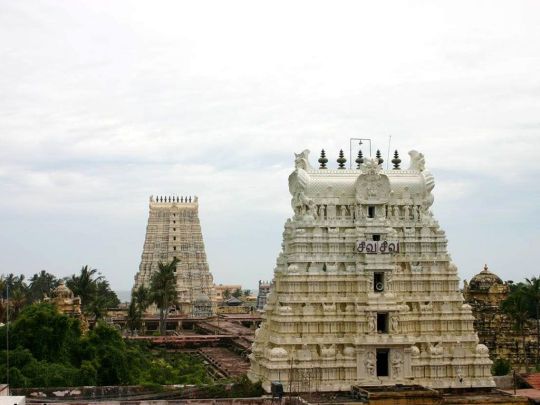
Rameswaram also transliterated as Ramesvaram, Rameshwaram) is a municipality in the Ramanathapuram district of the Indian state of Tamil Nadu. It is on Pamban Island separated from mainland India by the Pamban channel and is about 40 kilometres from Mannar Island, Sri Lanka. It is in the Gulf of Mannar, at the tip of the Indian peninsula. Pamban Island, also known as Rameswaram Island, is connected to mainland India by the Pamban Bridge. Rameswaram is the terminus of the railway line from Chennai and Madurai. Together with Varanasi, it is considered to be one of the holiest places in India to Hindus and is part of the Char Dham pilgrimage. According to the Ramayana, Rama is described to have built a bridge from the region approximating this town across the sea to Lanka to rescue his wife Sita from her abductor Ravana. The temple, dedicated to the Hindu god Shiva, is at the centre of the town and is closely associated with Rama and Shiva. The temple and the town are considered a holy pilgrimage site for Shaivas and Vaishnavas.
Rameswaram is the second closest point from which to reach Sri Lanka from India and geological evidence suggests that the Rama Sethu was a former land connection between India and Sri Lanka.
The town has been in the news in past due to controversies such as the Sethusamudram Shipping Canal Project, Kachchatheevu, Sri Lankan Tamil refugees and capturing local fishermen for alleged cross-border activities by Sri Lankan Forces.
Rameswaram is administered by a municipality established in 1994. The town covers an area of 53 km2 (20 sq mi) and had a population of 44,856 as of 2011. Tourism and fishery employ the majority of workforce in Rameswaram.
KODAIKANAL
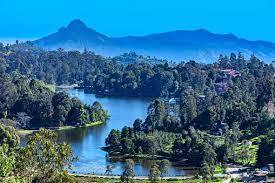
Located in the state of Tamil Nadu, Kodaikanal is one of the most famous honeymoon destinations in India. A Lakeside resort town of Tamil Nadu, Kodaikanal has a beautiful climate, mist-covered manicured cliffs and waterfall that come together to create the ideal setting for a perfect getaway. Kodaikanal means 'the gift of the forests'.
Nestled amidst the rolling slopes of the Palani Hills, Kodaikanal stands at an altitude of 7200 feet above sea level, and once you visit this hill station, you will find that every bit of what you have imagined it to be is real. Kodaikanal is a place you can go to take a break from the rigours of daily city life, and this hill station lets you sit back and connect with nature as you head out on biking or trekking trails or take a stroll through the vast forests surrounding the town.
Located in the state of Tamil Nadu, Kodaikanal is one of the most famous honeymoon destinations in India. A Lakeside resort town of Tamil Nadu, Kodaikanal has a beautiful climate, mist-covered manicured cliffs and waterfall that come together to create the ideal setting for a perfect getaway. Kodaikanal means 'the gift of the forests'.
PALANI
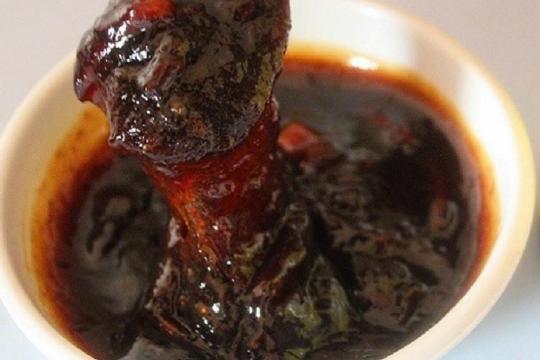
Nestled amidst the rolling slopes of the Palani Hills, Kodaikanal stands at an altitude of 7200 feet above sea level, and once you visit this hill station, you will find that every bit of what you have imagined it to be is real. Kodaikanal is a place you can go to take a break from the rigours of daily city life, and this hill station lets you sit back and connect with nature as you head out on biking or trekking trails or take a stroll through the vast forests surrounding the town.
AUROVILLE
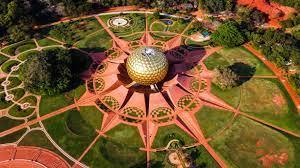
Auroville is a universal township in the making for a population of up to 50,000 people from around the world. The concept of Auroville – an ideal township devoted to an experiment in human unity – came to the Mother as early as the 1930s.In the mid 1960s the concept was developed and put before the Govt. of India, who gave their backing and took it to the General Assembly of UNESCO. In 1966 UNESCO passed a unanimous resolution commending it as a project of importance to the future of humanity, thereby giving their full encouragement.
The purpose of Auroville is to realise human unity – in diversity. Today Auroville is recognised as the first and only internationally endorsed ongoing experiment in human unity and transformation of consciousness, also concerned with – and practically researching into – sustainable living and the future cultural, environmental, social and spiritual needs of mankind.
HOGENAKKAL
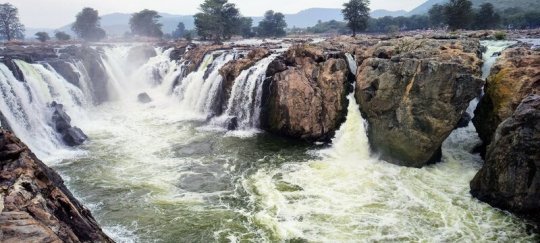
Hogenakkal Fall is a waterfall in South India on the Kaveri river on the border between Dharmapuri district of Tamil Nadu and Chamrajnagar district of Karnataka.It is located 46 km (29 mi) from Dharmapuri district headquarter and 199 km (124 mi) from Chamrajnagar district headquarter. It is also located 127 km (79 mi) from Bangalore, 181 km (112 mi) from Mysore, 344 km (214 mi) from Chennai and 200 km (120 mi) from Coimbatore.It is sometimes referred to as the "Niagara Falls of India," it is known for bathing areas and hired boat rides and as a major tourist attraction. Carbonatite rocks in this site are considered to be the oldest of its kind in South Asia and one of the oldest in the world. The Government of Tamil Nadu made a proposal to convert the falls into providing drinking water for the state.
KANYAKUMARI
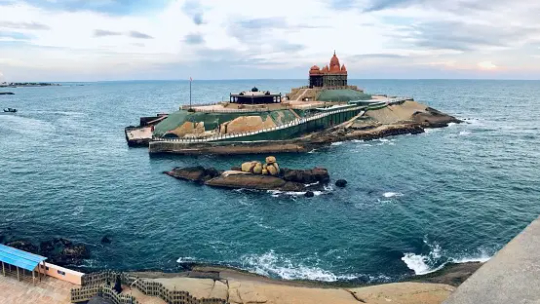
Kanyakumari, the southernmost point of the Indian peninsular mainland is a district that is situated in the southern state of Tamil Nadu. Kanyakumari district got its official name from the renowned 3000 year old Kumari Amman temple (devoted to Devi Kanya Kumari, i.e., the virgin goddess - an aspect of Parvathy) enshrined in the region.
Kanyakumari has got a great deal of recognition to its name that the district is regarded as the most literate district in the southern state of Tamil Nadu. Besides, the district is considered as the second most urbanized territory in the southern state, succeeding only to Chennai and second most prominent zone in the state of Tamil Nadu in terms of population density. Kanyakumari district boasts singular and wide-ranging natural features with ocean on three sides and the mounts of the Western Ghats abutting the northerly face.
KUMBAKONAM
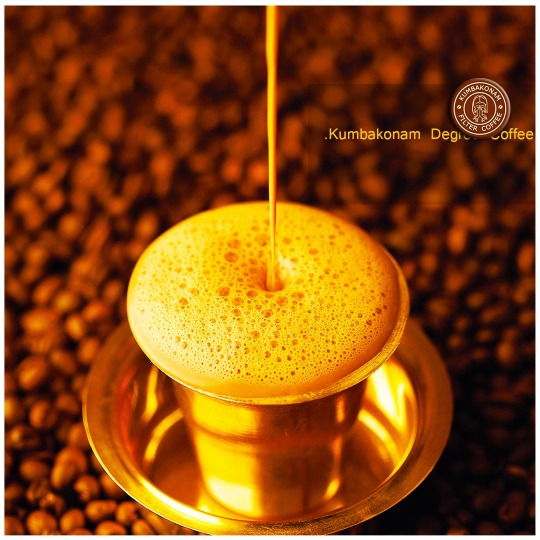
Sandwiched between two great rivers of southern India, Cauvery and Arsala, Kumbakonam is a gorgeous temple town in the heart of the Thanjavur district of Tamil Nadu.The town is a place for the lovers of history and those seeking to understand India's cultural roots and Hinduism.
The town is also known for its grand festival called Mahamaham festival which is celebrated every twelve years at the Mahamaham Tank. The town is one of the oldest in Indian history, and known for its famed temples, Chola heritage and also for its marvelous educational institutes.
MADURAI
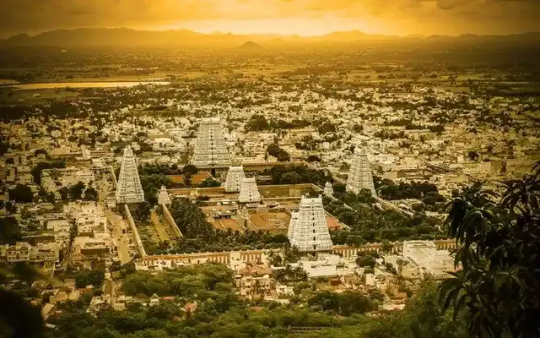
Madurai, formerly (until 1949) Madura, city, south-central Tamil Nadu state, southern India. It is located on the Vaigai River, about 30 miles (48 km) southeast of Dindigul. Madurai is the third most populous, and probably the oldest, city in the state.
The ancient history of the region is associated with the Pandya kings, and Madurai was the site of the Pandya capital (4th–11th century CE). Later it was conquered by Chola, Vijayanagar, Muslim, Maratha, and British rulers. In the 1940s it became known as the centre of the civil disobedience movement against the British raj, and it remained an important seat of political leadership.
COIMBATORE
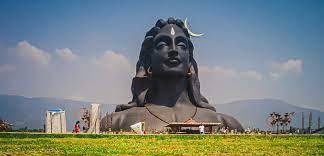
Coimbatore is the third largest city of the state, one of the most industrialized cities in Tamil Nadu, known as the textile capital of South India or the Manchester of the South India, the city is situated on the banks of the river Noyyal, Coimbatore existed even prior to the 2nd or 3rd century AD by Karikalan, the first of the early Cholas. Among its other great rulers were Rashtrakutas, Chalukyas, Pandyas, Hoysalas and the Vijayanagara kings. When Kongunadu fell to the British along with the rest of the state, its name was changed to Coimbatore and it is by this name that it is known today, in local Tamil language it is also called as Kovai.
In the rain shadow region of the Western ghats, Coimbatore enjoys a very pleasant climate all the year round, aided by the fresh breeze that flows through the 25 kms long Palakkad gap. The rich black soil of the region has contributed to Coimbatore’s flourishing agriculture industry and, it is in fact the successful growth of cotton that served as a foundation for the establishment of its famous textile industry. The first textile mill came as far back as 1888 after that many textile mills were started and provided many employment opportunities to within as well as neighboring Districts. The result has been a strong economy and a reputation as one of the greatest industrial cities in South India.
TANJAVOR
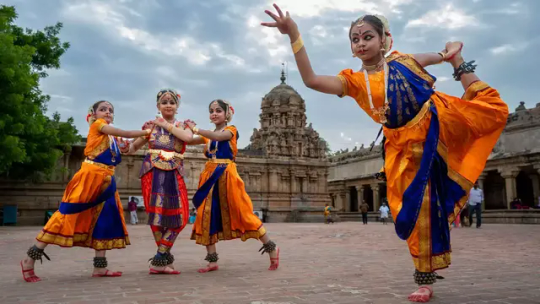
Thanjavur, formerly Tanjore, city, eastern Tamil Nadu state, southeastern India. It lies in the Kaveri (Cauvery) River delta, about 30 miles (50 km) east of Tiruchchirappalli.
An early capital of the Chola empire from the 9th to the 11th century, it was important during the Vijayanagar, Maratha, and British periods. It is now a tourist centre. Attractions include the Brihadishvara Chola temple, which was designated a UNESCO World Heritage site in 1987 (expanded in 2004 by naming two other nearby Chola temples); a Vijayanagar fort; the palace of Sarfoji, a Maratha prince; and Sarasvati Mahal Library, known for its large collection of manuscripts dating from the 16th to the 19th century. The city is also known for a distinctive painting style—in which such materials as gold foil, lace, and semiprecious stones are used to embellish the painting—and for a style of embossed metal plates. Industries include cotton milling, traditional hand-loom weaving, and the manufacture of vinas (south Indian stringed instruments). The city is the seat of Tamil University (1981) and has several other colleges.
TIRUNELVELI

Tirunelveli also known as Nellai and historically as Tinnevelly, is a major district in the Indian state of Tamil Nadu. Tirunelveli city is the administrative headquarters of the Tirunelveli District. Tirunelveli Municipal Corporation is the sixth-largest municipal corporation in the state of Tamil Nadu. The name Tirunelveli has been composed of the three Tamil words i.e. ‘Thiru – Nel – Veli’ meaning Sacred Paddy Hedge. With effect from 20.10.1986, the district was bifurcated and a new Tuticorin District was formed and also with effect from 12.11.2019, the district was bifurcated and a new Tenkasi District was also formed. Now Tirunelveli District has a geographical area of 3876.06 sq. km, in the Southeastern portion of Tamil Nadu is triangular in shape. It lies between 8°.14’ and 9°.07’ of the Northern latitude and 77°.17’ and 77°.97’ of Eastern longitude. The Tirunelveli Sthalapurana prescribes a tradition for the origin of the name Tirunelveli. The puranic version goes that one Vedasarma, a staunch devotee of Shiva, on his pilgrimage from the North to the South was invited by Lord Shiva in his dream to his abode on the banks of the sacred river Tamiraparani.
THIRUVANNAMALAI
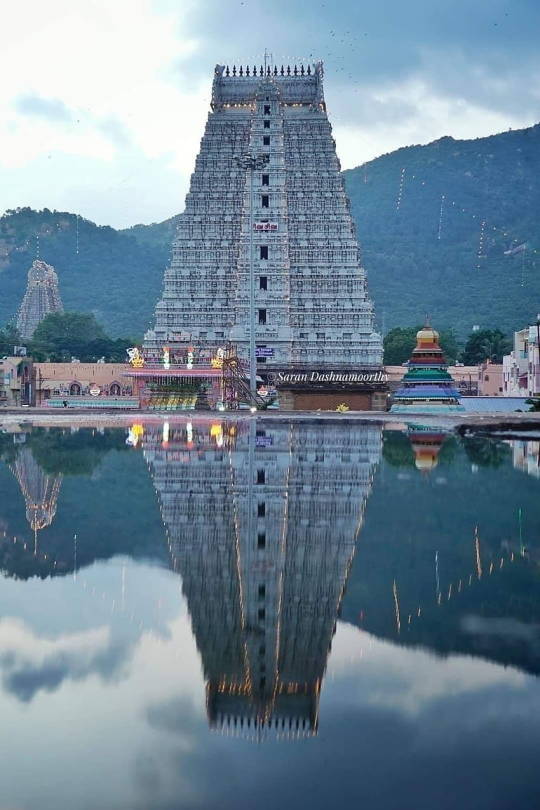
On the foothills of the Annamalai Hills nestles the picturesque city of Thiruvannamalai, alluring travellers with its quaint charm and divine feel. A cultural, spiritual and economic hub, Thiruvannamalai is one of the cities to be featured in Lonely Planet. The earliest recorded references of the city date back to the 9th century from Chola inscriptions.
Much of the history of Thiruvannamalai revolves around the Annamalaiyar Temple, the most notable landmark in the region, which is quite synonymous with the city itself. The area was under the dominion of Chola kings for over 4 centuries. During the reign of the Hoysala Kings, Thiruvannamalai served as the capital of their kingdom. The region was a place of great interest and importance to various dynasties including the Sangama, Saluva, Tuluva, Vijayanagara empire and the Nawab of Carnatic. By the early 19th century, Thiruvannamalai fell under the rule of the British.
OOTY
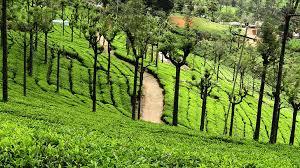
Coonoor is a municipality and a Taluk located in the Nilgiris district, on the western edge of the state, Tamil Nadu, India. As far as size is concerned, Coonoor, after Ooty, comes second in largeness in all of the beautiful hills of the Nilgiris, providing people with a lot of ground to tour. For more than one trekking expeditions, Coonoor is an ideal base and leads right into the Nilgiri Hills. The tourist places in Coonoor are breath-takingly beautiful.
A small hamlet in Tamil Nadu, Velankanni is a popular pilgrim center, especially renowned for the Church of Mother Mary. As a great number of pilgrims turn up here, like Lourdes in France, Velankanni is nicknamed as Lourdes of the East. Velankanni is also famous for its delicate handlooms and silk.
THOOTHUKUDI
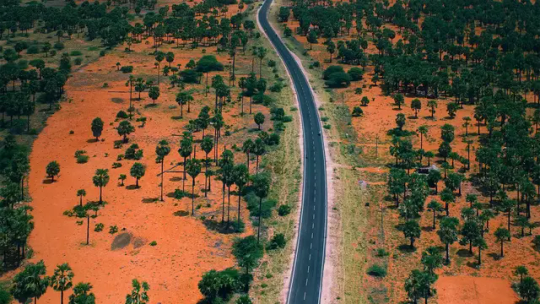
Traditionally known as “Pearl City” on account of the prevailing Pearl fish in the past in the area, Thoothukudi has a fascinating History. Forming part of the Pandian kingdom between 7th and 9th Century A.D., Thoothukudi remained in the hands of the Cholas during the period between 9th and 12th century. Emergence of Thoothukudi as a maritime port attracted travelers, adventures, and eventually colonizers. The Portuguese were the first to arrive in Thoothukudi in 1532 A.D., followed by the Dutch in 1658 A.D. The English Captured Thoothukudi from the Dutch in 1782 and the East India Company established their control over Thoothukudi in the same year.
On the 20th, October 1986 a new district, carved out of the erstwhile Tirunelveli district was born in Tamil Nadu and named after V.O.Chidambaranar, a great national leader hailing from Ottapidaram who led the Swadeshi Movement in the south. Since 1997 as in the case of other districts of Tamilnadu, this district has also been named after its headquarters town, Thoothukudi.
YELAGIRI
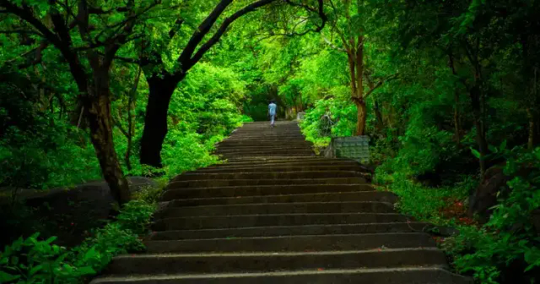
Yelagiri is a hill station located in the newly formed Tirupattur district of Tamil Nadu, India, situated off the Vaniyambadi-Tirupattur road.[1] Located at an altitude of 1,110.6 metres above Mean Sea Level and spread across 30 km2, the Yelagiri Hill (also spelled Elagiri Hill at times) is surrounded by orchards, rose-gardens, and green valleys.[2] Yelagiri is a branch of Annamalai Hills.
KANCHIPURAM
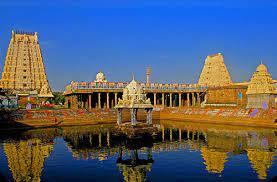
Kancheepuram district is situated on the northern East Coast of Tamil Nadu and is adjacent by Chennai city and is bounded in the east by Chengalpattu District, west by Vellore District , south by Thiruvannamalai district, in the north by Thiruvallur district and Chennai district. It lies between 11° 00′ to 12° 00’ North latitudes and 77° 28′ to 78° 50′ East longitudes. The district has a total geographical area of 1704.79 Sq.Kms . Kancheepuram, the temple town is the district headquarters. For administrative reasons, the district has been divided into 2 revenue divisions comprising of 5 taluks with 520 revenue villages. For development reasons, it is divided into 5 development blocks with 274 Village Panchayats.
CHETTINAD
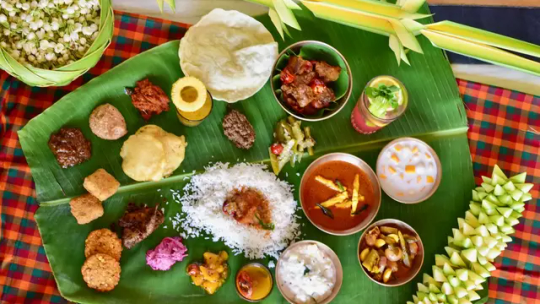
The word "Chettiar" refers to the social caste of mercantile bankers. The Chettiars are known to be traders in salt and spices and this is reflected in the Chettinad cuisine. Meals also consist of cooked lentils, Brinjal curry, drumstick sambar, ghee for flavouring rice, and sweet meals like payasam and paal paniyaram. In general, beef and pork dishes are not served. Some well-known local dishes are Chicken Chettinad (spicy chicken curry), Vegetable Chettinad (a vegetable curry) and dishes featuring seafood.
TRICHY
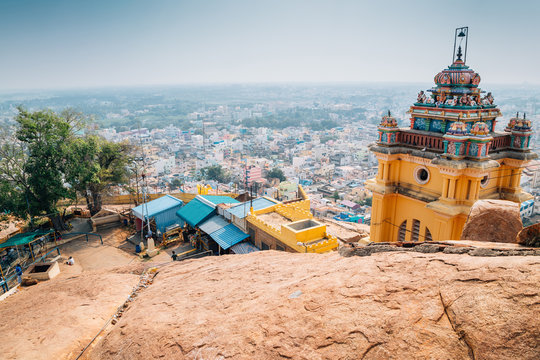
Tiruchirappalli, situated on the banks of the river Cauvery is the fourth largest city in Tamil Nadu. It was a citadel of the early Cholas which later fell to the Pallavas. Trichy is a fine blend of tradition and modernity built around the Rock Fort. Apart from the Fort, there are several Temples dating back to the 1760s. The town and its fort, now in Trichy were built by the Nayaks of Madurai. This District has given great scholars and leaders whose contributions to the society have been very significant.
CHIDAMBARAM
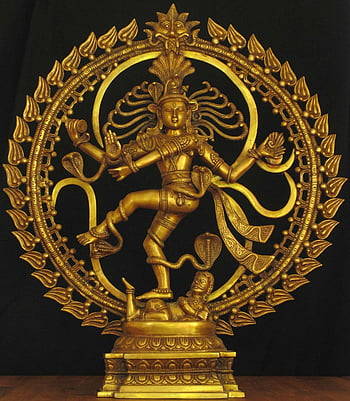
Chidambaram – Land of Nataraja A tiny town tucked away along the Bay of Bengal in the Cuddalore district of Tamil Nadu, Chidambaram is home to what is perhaps the most iconic Shiva temple in India. With several other important temples dotting the landscape, beautiful beaches, rivers, canals, backwaters and widespread mangroves, Chidambaram is so much more than just a temple town.
The Chidambaram Nataraja temple, also known as the Thillai Nataraja Temple, is one of the few temples in India that feature Shiva as an anthropomorphic being rather than being represented by the lingam. The bejeweled idol enshrined at the temple poses in the iconic cosmic dance (the Bharatnatyam mudra known as ananda tandava). Consisting of five courts, the 10th century temple was rebuilt around 1213 AD and sprawls over 50 acres in the heart of Chidambaram city. The temple is ancient and important both from both the historical and the architectural viewpoint.
KUTRALAM
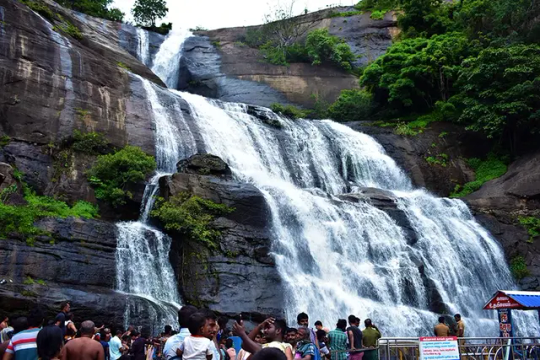
Are you looking for waterfalls with miraculous water that can cure all your body ailments and make your body rejuvenated, then Courtallam is your destination. This famous waterfall is the summer retreat for Tamilnadu people.
This waterfall ranks first in attracting lots of tourists every year. This lovely waterfall is what one need to heed to escape from the scorching sun. The Courtallam waterfall is a combination of nine waterfalls, each differs in size, volume of water, height and water current.
Speciality of the place These falls are considered to be natural spa, which could remove all your body pains. The river sources of thess falls are River Chittra, Manimutharu, Pachaiyar and Tamirabarani which cascades over 60m-92 m. The bitter part of this falls is, during season time, it will be over crowed and thronged with people.
The nine waterfalls at Courtallam are as follows Main Falls (Peraruvi), Small Falls (Chittaruvi), Chembakadevi (Shenbaga) Falls, Honey Falls (Thenaruvi), Five Falls (Aintharuvi), Tiger Falls (Puliaruvi), Old Courtallam Falls (Pazhaya Courtallam), New Falls (Puthu Aruvi), Fruit Garden Falls or Orchard Falls (Pazhathotta Arvui).
VELLORE
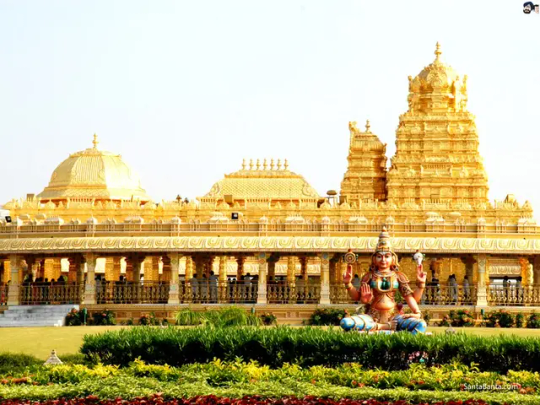
Vellore had the previlege of being the seat of the Pallava, Chola, Nayak, Maratha, Arcot Nawabs and Bijapur Sultan Kingdoms. It was described as the best and the strongest fortress in the Carnatic War in the 17th Century. It was witnessed the massacre of European soldier during the mutiny of 1806.
Vellore district lies between 12° 15’ to 13° 15’ North latitudes and 78° 20’ to 79° 50’ East longitudes in Tamilnadu State. The geographical area of this district is 5920.18 sq. k.m.
1 note
·
View note
Text
Karunanidhi

This Biography is about one of the best Indian Politician Karunanidhi including his Height, weight, Age & Other Detail… Express info Real Name Muthuvel Karunanidhi (born Daksinamoorthy) Nickname Kalaignar Profession Indian Politician Date of death 7 August 2018 Physical Stats & More Info Party Dravida Munnetra Kazhagam (DMK) Political Journey • Karunanidhi entered politics at just 14 and participated in Anti-Hindu agitations and then founded an organization for the local youth. He then circulated Manavar Nesan, a handwritten newspaper to its members. • He later found Tamil Nadu Tamil Manavar Mandram, the first student wing of Dravidan Movement. • In 1957, he was elected to the Tamil Nadu assembly for the first time from the Kulithalai constituency of Thiruchirapalli district representing DMK. • He became party treasurer in 1961. • Karunanidhi was made the minister for public works in 1967 when DMK was elected to the power in the state. • Annadurai's death in 1969 earned him the post of party leader and became the Chief Minister of Tamil Nadu. He has since then maintained his post. Biggest Rival Jayalalithaa Jayaram Physical Stats & More of Karunanidhi Height (approx.) in centimeters- 168 cm in meters- 1.68 m in Feet Inches- 5’ 6” Weight (approx.) in Kilograms- 87 kg in Pounds- 192 lbs Eye Colour Black Hair Colour Semi-Bald (White) Personal Life of Karunanidhi Date of Birth 3 June 1924 Age (as in 2018) 94 Years Birth Place Thirukuvalai, Tanjore district, Madras Presidency, British India Zodiac sign/Sun sign Gemini Nationality Indian Hometown Madras, Tamil Nadu India School Not Known Debut Tamil Film Industry- Rajakumari was the first film for which he wrote the script back in 1947 which gained him popularity he needed to continue in the field. Politics- He was inspired by the speech of Alagiriswamii of the Justice Party and jumped to the politics at just 14 and participated in Anti-Hindu agitations. Family Father- Muthuvelar Karunanidhi Mother- Anjugam Karunanidhi Brother- Not Known Sister- Not Known Religion Atheism Controversies • Sarkaria Commission accused Karunanidhi of his involvement in corruption in the allotment of tenders for Veeranam project, for which his government was dismissed by the then Prime Minister Indira Gandhi. • In 2001, Karunanidhi along with former Chief Secretary K.A. Nambiar was arrested based on charges of corruption in the construction of flyovers in Chennai. He and his party members were charged under several sections of the IPC. However, no rigid evidence was found against them. • In 2012, while celebrating the party founding day, Karunanidhi and party workers were received by a group of people who were dressed portraying some of the Hindu gods. • He once made a controversial remark against Sethusamudram controversy, questioning the existence of God and asking about the college from where Lord Rama graduated in Engineering for building the Ramar Sethu bridge. • He had been accused of having links with Liberation Tigers of Tamil Eelam (LTTE), a militant group to create an independent state of Tamil Eelam in the north and east of Sri Lanka for Tamil people and encouraging them to assassinate Rajiv Gandhi. However, the final report had no such allegations on him. • Some political observers, his party members, and opponents accused him of promoting nepotism (favouring the relatives), for helping his son M. K. Stalin to rise in the party. Girls, Affairs and More of Karunanidhi Marital Status Married Affairs/Girlfriends N/A Wife Late Padmavathy Dayalu Ammal Rajathi Ammal Children Son- M. K. Muthu (Indian Actor, Singer, and Politician) M. K. Alagiri (Indian Politician) M. K. Stalin (Indian Politician) M. K. Tamilarasu (Film Producer) Daughter- Selvi Kanimozhi (Rajya Sabha MP) Money Factor of Karunanidhi Salary Not Known Net Worth (approx.) INR 11,94,37,427 (as of 2016) This Biography written By www.welidot.com Read the full article
0 notes
Text
Post # 131
A bridge, its history and its mythology...
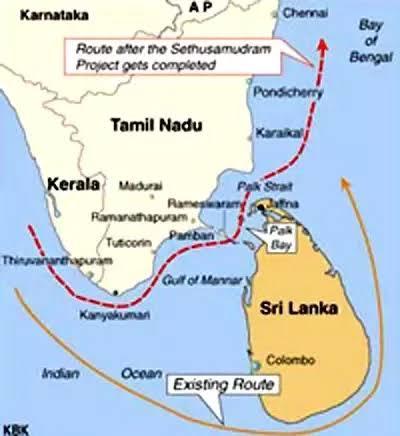
In 1860, a British Indian Naval Officer, Alfred Dundas Taylor, proposed that the time and distance taken by ships traveling from the west coast of India to its east coast and vice versa could be cut down significantly, if a sufficiently wide and deep passage was made connecting the Gulf of Mannar and The Palk Strait, separating the Indian mainland from Sri Lanka. Because of the shallow waters in the Gulf and the Strait, ships had to circumnavigate 400 nautical miles more, around Sri Lanka, taking them upto 30 more hours and a commensurate increase in cost. From 1860 till Indian independence in 1947, nine proposals were made and evaluated. But no action was taken.
In 1955, the independent Indian government set up a committee called the Sethusamudram Project Committee. After evaluating the costs and benefits, this committee found the project feasible and viable. Five more proposals and technical reports followed. But no action still, till 2005, when Dr. Manmohan Singh, the then Prime Minister, inaugurated the project, 145 years after the original proposal was made.
The project, budgeted at INR 2600 crores, was supposed to take 3 years, and was supposed to dredge a canal 165 km long, 300 meters wide and sufficiently deep to let cargo ships traverse that route.
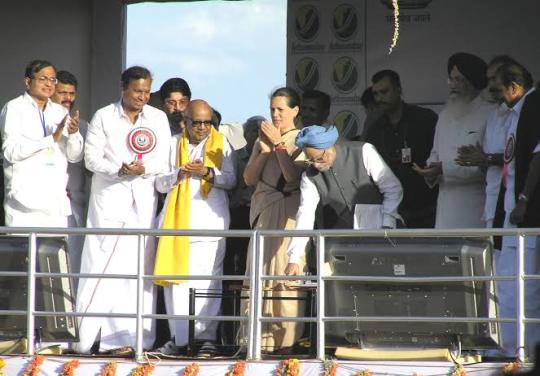
Today is 2020. Fifteen years have passed and still no Setusamudram canal. Why? Because, right from its inception, the project had a few issues:
1. About 65 % of the ships in that area come from Africa and Europe. For them, the time saving was not 30 hours, but just 8 hours.
2. The channel could take only 30000 tonnage vessels. But most of the new ships, which are of 60000 tonnage and tankers, which are 150000 tonnes or more, cannot use the canal.
3. The project would disturb the ecological balance and destroy corals and kill marine life. It would also destroy conch trade worth INR 150 crores annually.
But the biggest issue was - the Sethusamudram canal would cut through and destroy what was left of the mythological Ram Sethu or Adam's bridge. And that would be disastrous to the political fortunes of the government that did that.
So what exactly is the story of the Ram Sethu or Adam's bridge? And why is it so sensitive? Therein lies a tale.
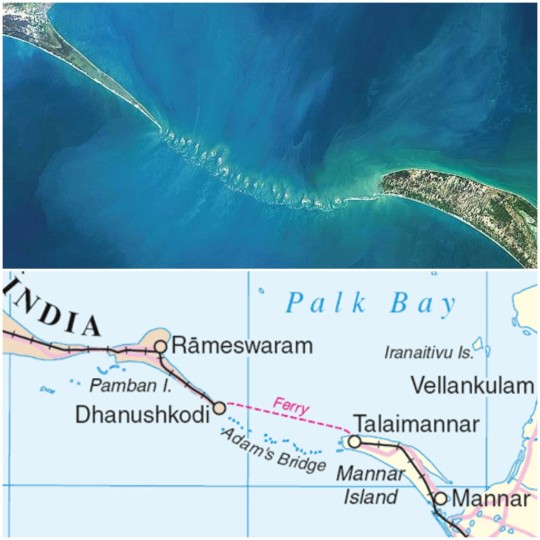
The Ram Sethu is today, a 50 km long chain of limestone shoals, between a village called Dhanushkodi, on Rameswaram Island (also called Pamban Island), in Tamil Nadu, India, and another village called Talaimannar on Mannar Island, in Sri Lanka. The bridge is believed to have been made by Lord Rama and his Vanara army to reach Lanka and rescue his wife, Sita from the evil king, Ravana. The Sri Lankan muslims, on the other hand, believe that Aadhaam, their first Islamic leader, walked over this bridge by foot from India to Lanka and thus this bridge has a holy connotation for them. Aadhaam got morphed to Adam, because the British found it easier to pronounce. Hence, this bridge was also called Adam's bridge. But for most Indians, especially Hindus, this bridge is Rama Setu or Nala Setu (because it was built by Nala, the architect-monkey in Rama's army).
That makes it mythological, right? Why worry about mythology in the 21st century?
Because that also makes the issue religious. In India, religious issues become political issues. Right wing parties like BJP and organizations like VHP put their foot down and said, "How can you break a bridge built by Ram?" Secular parties said, "Since Ram is mythological, Ram Sethu is mythological too."
I also grew up believing Ram and Ramayan to be undoubtedly mythological. But recently, I read a book called Historical Ram, written by D K Hari and his wife, D K Hemahari (who run an organization called Bharat Gyan), wherein they attempt to provide scientific and logical proof that Ram and Ramayan are historical.
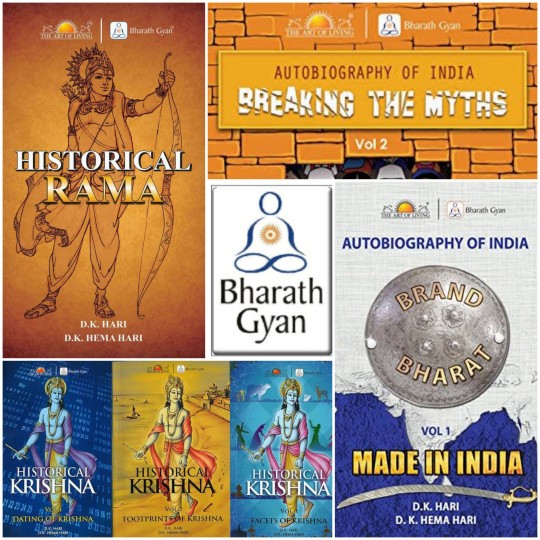
The various arguments they put forward are as follows:
1. They say Ramayana and Mahabharata are called Itihasa in Sanskrit. Itihasa = Iti + hasa. Meaning - It happened like this = History.
They say that until the British came to India, Ramayana and Mahabharata were indeed considered to be have happened. The British classified these epics as mythology.
2. They use a technology called archaeo-astrology and make some powerful propositions. Archaeo-astrology is a technique of charting the future or past sky using a scientific tool called planetarium software. This tool helps to arrive at planetary positions, given a date in future or past. Vice-versa, given a set of planetary configurations, the tool can help identify the date in future or past, when the planetary configuration will or could have occurred.
This software was apparently developed by NASA to estimate the planetary positions of Voyager missions that would take 10-12 years to reach their destinations. Now, declassified, it is available for public use. Reminds me of how the internet was a classified invention of the US defence before it was made publicly available.
The authors refer to one Mr. Pushkar Bhatnagar, who used the original Sanskrit text of Ramayana and this technique to date the era of Lord Ram. For example, the birth of Rama is explained in detail by Valmiki.
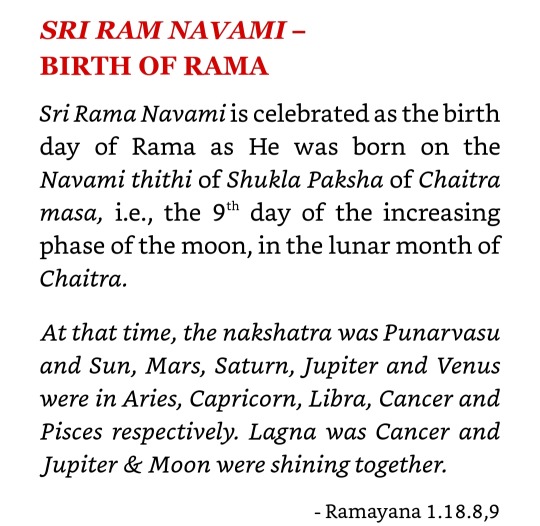
This information, when fed into the software, tells us that Ram was born on 10th January, 5114 BC, at 12.30 pm, as per the Gregorian calendar!
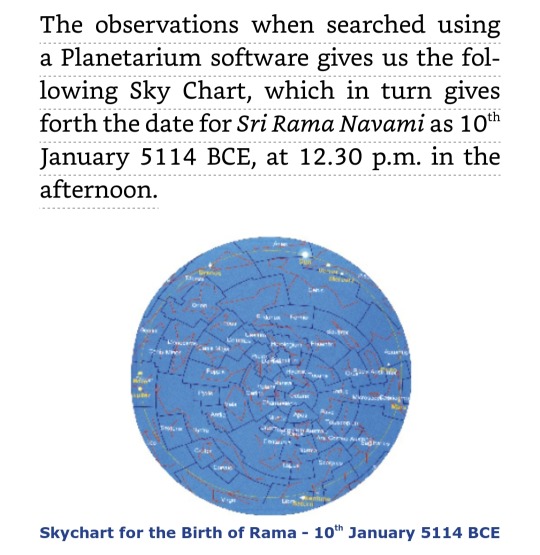
This way, all major events in Ramayan were dated. Fantastic, isn't it?

Notice how the dating shows that Ram gets exiled when he was 25 years old, and how the Khar-Dushan episode happens in the 12th year of exile. Pretty consistent results, eh?
3. The geographic locations in Ramayan are actual places that exist even today - some of them have the same names then and now.
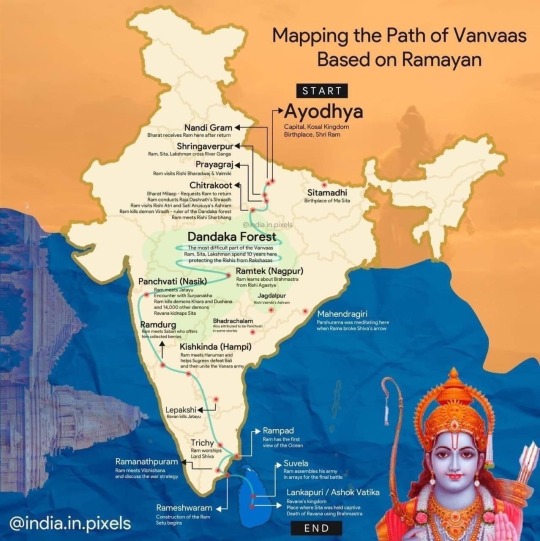
4. There is one school of thought that says that Ram Setu could be a natural phenomenon. The book refutes this possibility by saying that the layers of the bridge are so discrete that they can only he man-made.
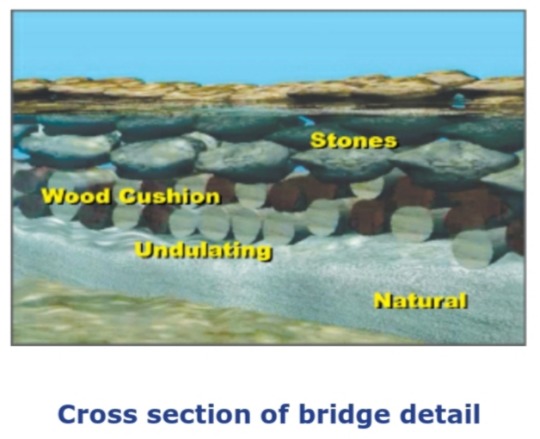
None of these arguments are conclusive by themselves. But honestly guys, put together, there is a strong case that, after all, Ram and Ramayan may not be mere mythology. Maybe they are history - Itihas!
If they are, I would agree with Dr. Hari and his wife that Ram Sethu should be a protected monument. I will join them in demanding for a UNESCO world heritage site declaration for this piece of geography. Already in the past 500 years, a large part of it was lost to a cyclone. It is said that till 1480 AD, the bridge was a meter over sea level and one could walk from India to Sri Lanka over it.

And I look forward to the current BJP led NDA government and its minister, Nitin Gadkari's proposal that a bridge should be made from India to Sri Lanka, instead of a canal. This fits beautifully with this government's Look East foreign policy, whereby they are connecting all our neighbouring countries, as a counter to China and its aggressive intent.
#alfred dundas taylor#Sethusamudram project#Sethusamudram canal#bharat gyan#adams bridge#historical rams#d k hari#d k hemahari#rama#mythology#look east#archae astrology#dating of ram#planetarium software#Itihasa#history#rameshwaram#Dhanushkodi#talaimannar#Nala setu#rama setu
10 notes
·
View notes
Text
nasa shuts down Rama Setu bridge fake news
NASA said that its satellite photos had been egregiously misinterpreted to make this point during the protests against Sethusamudram Shipping Canal Project. NASA noted: "The images reproduced on the websites may well be ours, but their interpretation is certainly not ours. [...] Remote sensing images or photographs from orbit cannot provide direct information about the origin or age of a chain of islands, and certainly, cannot determine whether humans were involved in producing any of the patterns seen."
A report from the Archaeological Survey of India found no evidence for the structure being anything but a natural formation.The Archaeological Survey of India and the government of India informed the Supreme Court of India in a 2007 affidavit that there was no historical proof of the bridge being built by Rama. In 2017 the Indian Council of Historical Research (ICHR) announced a pilot study into the origins of the structure, but went on to shelve it.
0 notes
Text
Sethusamudram project would benefit only few DMK leaders: BJP's Annamalai#Sethusamudram #project #benefit #DMK #leaders #BJPs #Annamalai
Sethusamudram project would benefit only few DMK leaders: BJP’s Annamalai#Sethusamudram #project #benefit #DMK #leaders #BJPs #Annamalai
BJP Tamil Nadu unit chief Annamalai on Friday said the Sethusamudram waterway project straddling India and Sri Lanka would only benefit a few shipping companies owned by leaders of the ruling DMK. The BJP leader posted a series of tweets, hitting out at Chief Minister MK Stalin and voicing opposition to the Sethusamudram project. The Opposition BJP, as well as Hindu seers, have expressed…

View On WordPress
0 notes
Text
Ram Setu Movie Review

RAM SETU is the story of an archeologist’s life-changing expedition. The year is 2007. Dr. Aryan Kulshrestha (Akshay Kumar) goes to Bamyan, Afghanistan for a joint expedition with a Pakistani team. Here, he excavates ancient treasure belonging to an Indian king. Suddenly, the Talibans attack the site. Aryan escapes, but at the same time, he manages to take the treasure chest with him. At a press conference, he happens to speak about being an atheist and it grabs all the headlines, more than how he risked his life to preserve history. Meanwhile, Indrakant (Nassar), owner of Pushpak Shipping, requests the government of India to dismantle the Ram Setu, as part of his Sethusamudram Project. He believes this will save fuel and reduce the travel time between India and Sri Lanka. This leads to massive anger in the country and a petition is filed in the Supreme Court. The government, which is hand in gloves with Indrakant, takes the help of the Archeological Society of India (ASI). Aryan has just been promoted as Joint Director General of the ASI. The government feels an atheist like him can help them. He is asked to submit a report stating that Ram Setu is a naturally made structure and is not man-made. Aryan asks for time to research on this, but he's not allowed to do so. The report submitted by him, however, also raises question on Ramayana. It leads to a major controversy. But Indrakant is happy. He asks him to go to Ram Setu and prove to the world that it is not man-made. Aryan reaches Rameshwaram. Project Manager Bali (Praveshh Rana), environmentalist Dr. Sandra Rebello (Jacqueline Fernandez) and Dr. Gabrielle (Jennifer Piccinato) are also enlisted to help Aryan in his mission. As per some research, Lord Ram was born 7000 years ago. Aryan has to prove that the Ram Setu predates the birth of Lord Ram. As he begins his research, he realizes that he might be wrong in his belief and that Ram Setu was indeed built by Lord Ram and the Vanar Sena. What happens next forms the rest of the film. Show Less Source link Read the full article
#BoxOffice#Images#MovieRatings#Movietrailerdownload#Music#News#OfficialTrailer#Photos#RamSetu#ReleaseDate#ReviewsRamSetu#Songs#Videos
1 note
·
View note
Text
Ram Setu Movie Review
RAM SETU is the story of an archeologist’s life-changing expedition. The year is 2007. Dr. Aryan Kulshrestha (Akshay Kumar) goes to Bamyan, Afghanistan for a joint expedition with a Pakistani team. Here, he excavates ancient treasures belonging to an Indian king. Suddenly, the Taliban attacked the site. Aryan escapes, but at the same time, he manages to take the treasure chest with him. At a press conference, he happens to speak about being an atheist and it grabs all the headlines, more than how he risked his life to preserve history. Meanwhile, Indrakant (Nassar), owner of Pushpak Shipping, requests the government of India to dismantle the Ram Setu, as part of his Sethusamudram Project. He believes this will save fuel and reduce the travel time between India and Sri Lanka. This leads to massive anger in the country and a petition is filed in the Supreme Court. The government, which is hand in gloves with Indrakant, takes the help of the Archeological Society of India (ASI). Aryan has just been promoted as Joint Director General of the ASI. The government feels an atheist like him can help them. He is asked to submit a report stating that Ram Setu is a naturally made structure and is not man-made. Aryan asks for time to research on this, but he's not allowed to do so. The report submitted by him, however, also raises question on Ramayana. It leads to a major controversy. But Indrakant is happy. He asks him to go to Ram Setu and prove to the world that it is not man-made. Aryan reaches Rameshwaram. Project Manager Bali (Praveshh Rana), environmentalist Dr. Sandra Rebello (Jacqueline Fernandez), and Dr. Gabrielle (Jennifer Piccinato) are also enlisted to help Aryan in his mission. As per some research, Lord Ram was born 7000 years ago. Aryan has to prove that the Ram Setu predates the birth of Lord Ram. As he begins his research, he realizes that he might be wrong in his belief and that Ram Setu was indeed built by Lord Ram and the Vanar Sena. What happens next forms the rest of the film.
For more information related to Ram setu, Visit Bollywood Hungama.com
0 notes
Text
Sethusamudram project and the China factor
Sethusamudram project and the China factor
The Tamil Nadu Chief Minister MK Stalin urging the Prime Minister Narendra Modi to revive the stalled Sethusamudram Project could put the Centre in a tight spot. This was one of the demands made by Stalin when he met Modi on Thursday. The project has been controversial right from the start on the issue of non-viability and also due to religious sentiments attached to the Ram Sethu bridge believed…
View On WordPress
0 notes
Text
It's curtains for Sethusamudram ship channel project
It’s curtains for Sethusamudram ship channel project
Sethusamudram Corporation Ltd (SCL) is set to be wound up, bringing to end an ambitious maritime project that turned controversial over religious sentiments. “The Sethusamudram Corporation has passed a resolution seeking additional grant of ₹115.72 crore from the government to settle the dues of Dredging Corporation of India for the dredging works carried out at the project site along with a…
View On WordPress
0 notes
Text
DMK promises to abolish NEET, bring back old pricing for petrol & cylinders

The M K Stalin-led Dravida Munnetra Kazhagam (DMK) has promised to abolish the National Eligibility cum Entrance Test (NEET), formerly the All India Pre-Medical Test, as part of its poll promise. The party, which has joined hands with the Congress for the upcoming LokSabha election has also promised to bring back the old pricing models for petrol & gas cylinders.
DMK President Stalin released the party’s election manifesto for the Lok Sabha polls scheduled for April 18 in the state. The other promises of the party include metro rail projects for Madurai, Trichy, Coimbatore and Salem, and permanent Indian citizenship for Sri Lankan refugees currently living in camps in Tamil Nadu. The party also promised to release seven prisoners jailed in the Rajiv Gandhi assassin case, loan waivers for students, a separate budget for farmers at the Lok Sabha, free electricity for weavers, museum at Keezhadi, 0.5 per cent GDP for natural disasters, MNREGA up to 150 days.
The other poll promises include bringing back the Sethusamudram project, reduction of cable TV prices, a new law will be introduced to prevent sexual harassment through online, Old pension scheme for Government employees Education to be brought back into state list Expired Toll gates on highways will be removed.
0 notes
Text
The Rama Bridge or Adam Bridge is not myth - explains american scientists
The Rama Bridge or Adam Bridge is not myth – explains american scientists
The Rama Bridge is situated 50 miles (50 km) from the palm tree near Malleswaram to Talaimannar in Sri Lanka. It is true that it was built by humans, US scientists said.
According to mythology, the Rama Bridge is said to have been constructed by the army. Legends say that this is the only way to reach Sri Lanka from India as a sea route.
The Indian Historical Research Center was about to…
View On WordPress
#Adam&039;s Bridge#Hindu#India#Ram Setu#Rama#Rama bridge#Ramayana#Sethusamudram Shipping Canal Project#Sri Lanka#United States
0 notes
Text
Muthuvel Karunanidhi was one of the last links to the Dravidian movement that ushered in the rise of backward classes in politics and the end of Congress rule in Tamil Nadu five decades ago on the plank of social justice.A five-time Chief Minister, the 94-year-old Karunanidhi, who strode the public life of Tamil Nadu like a colossus, also played a key role in national politics when he aligned with Indira Gandhi in 1971 and reaped rich rewards in elections.But he staunchly opposed the Emergency of 1975-77 during which his government was dismissed on corruption charges. He was banished to the opposition ranks till the death of his friend-turned-foe and iconic film hero M.G. Ramachandran or MGR in December 1987.Under Karunanidhi, the DMK occupied a prime position in the UPA governments at the Centre in 2004 and 2009 and earlier in the NDA government under Atal Bihari Vajpyee, an alignment that surprised many given the party’s Dravidian moorings.He was a wily politician who succeeded his mentor C.N. Annadurai or ‘Anna’ as Chief Minister in 1969 and kept a stranglehold on the party and government. He remained the President of the DMK for nearly 50 years, a rare feat in any democratic country.Always sporting dark glasses, which became his trademark identity, and in later years a yellow stole, which critics said was against the atheism he preached.With the death of his arch rival J. Jayalalithaa in 2016 and his departure now, Tamil Nadu is left with a void.Born in Tirukkuvalai in the erstwhile Thanjavur district on June 3, 1924, Karunanidhi was a multifaceted personality — journalist, playwright, script writer — whose fiery dialogues as an iconoclast in films unleashed changes in Tamil Nadu’s social scene.He joined the Dravidian movement as a teenager under the tutelage of the late social reformer ‘Periyar’ E.V. Ramasamy and Anna.‘Kalaignar’, as Karunanidhi was called for his proficiency in arts and literature, fashioned theatre and cinema in a way that gave a fillip to the Dravidian movement and the rise of DMK as a major pole in Tamil Nadu.Karunanidhi’s political fortunes rose when Anna broke away from the DK to float the DMK in 1949. The box office hit of Tamil movie ‘Parasakthi’ for which he wrote the script and a ‘rail roko’ agitation in Kallakudi near Tiruchirapalli made him known throughout the state.He ascended to the DMK throne and the Chief Ministership following the death of party founder Annadurai in 1969.Karunanidhi had the party in his strong grip till the end despite presiding over two major splits and being out of power continuously between 1977 and 1989.Born in a poor Isai Vellalar (a backward caste) family, he was named Dakshinamurthy by his god-fearing parents Muthuvel and Anjugam. He later changed that to Karunanidhi, a Tamil name shorn of any Brahminical or Sanskrit tinge.He also took part in the anti-Hindi agitations of 1937-40 and published a handwritten newspaper ‘Manavar Nesan’ (Friend of Students) and later formed the first student wing of the Dravidian movement, Tamil Nadu Manavar Mandram.The anti-Hindi agitation was revived by the DMK in 1965, leading to massive anti-Congress sentiments amid much violence.Karunanidhi also published ‘Murasoli’, a monthly which grew to become a weekly and the DMK’s official daily. Last year it celebrated its platinum jubilee.He contested his first Assembly election in 1957 from Kulithalai successfully and since then has not lost any of the 13 elections he contested.His fortunes gained further strength when the DMK won the 1967 elections and Annadurai made Karunanidhi the Minister of Public Works.After Anna’s death in 1969, Karunanidhi became the Chief Minister. He led the DMK to a landslide win in 1971.Bad times started soon after. Perceiving the popularity of movie hero and party leader MGR as a future threat to him, Karunanidhi began sidelining him and ousted him in 1972.MGR floated the AIADMK that took power in 1977. He cultivated the Congress well — sharing liberally the Lok Sabha seats while retaining his hold on the Assembly — to effectively consign the DMK to the opposition benches.DMK’s fortunes revived in 1989 when it won handsomely assisted by a split in AIADMK, with one faction led by its founder’s widow Janaki Ramachandran and the other by Jayalalithaa.However, in 1991, the DMK government was dismissed in the wake of heightened activities in Tamil Nadu of Sri Lankan Tamil Tigers whose vocal supporter he was. After Rajiv Gandhi’s assassination by a LTTE suicide bomber in May 1991, the AIADMK under Jayalalithaa swept to power.The DMK suffered a second split in 1993 when Karunanidhi saw fiery speaker Vaiko as a threat to his son M.K. Stalin’s ascendancy in the party and expelled him.After that it was a see-saw battle with people choosing DMK and AIADMK alternatively. In 2006, the DMK was voted back to power for its populist promises.In 2011 Karunanidhi promised more, but the DMK lost the battle. In 2016 too, it suffered the same fate.A staunch opponent of Congress and its dynastic rule during earlier days, Karunanidhi later changed tact and paved the way for his progenies’ progress within and outside the party.He brought his sons — through his second wife Dayalu – M.K. Alagiri and M.K.Stalin — into the party. Alagiri became Union Minister while Stalin was declared the political heir. However Alagiri was dismissed from the party later for anti-party activities.Karunanidhi made Kanimozhi, his daughter by his third wife Rajathi, a Rajya Sabha member.After the death of Murasoli Maran, his nephew, conscience keeper and the party’s face in Delhi, Karunanidhi got the former’s second son Dayanidhi Maran a Cabinet post in the central ministry in 2004 and 2009.With coalitions becoming the norm at the Centre, the DMK started siding with BJP and Congress to get cabinet berths.It was the Sarkaria Commission which first stamped Karunanidhi as corrupt in the matter of allotting tenders for the old Veeranam water project.Though Karunanidhi was jailed several times during his long political innings, what shocked many was his midnight arrest by the Jayalalithaa regime in 2001 on corruption charges.His wife Dayalu and daughter Kaimozhi were questioned by the CBI over corruption charges.When the Sethusamudram Canal Project got mired in controversy, Karunanidhi shocked the nation by wondering aloud whether Lord Rama was an engineer to build bridge across the sea.Karunanidhi donated his home at Gopalapuram to a trust to convert it into a hospital for poor after his and his wife Dayalu’s lifetime.Karunanidhi is survived by his two wives Dayalu and Rajathi, sons M.K. Muthu, Alagiri, Stalin and M.K. Tamilarasu and daughters S. Selvi and Kanimozhi and grandchildren.IANS : 8th. Aug,18
MUTHUVEL KARUNANIDHI WAS ONE OF THE LAST LINKS TO THE DRAVIDIAN MOVEMENT THAT USHERED IN THE RISE OF BACKWARD CLASSES IN POLITICS : Muthuvel Karunanidhi was one of the last links to the Dravidian movement that ushered in the rise of backward classes in politics and the end of Congress rule in Tamil Nadu five decades ago on the plank of social justice.A five-time Chief Minister, the 94-year-old Karunanidhi, who strode the public life of Tamil Nadu like a colossus, also played a key role in national politics when he aligned with Indira Gandhi in 1971 and reaped rich rewards in elections.But he staunchly opposed the Emergency of 1975-77 during which his government was dismissed on corruption charges.
0 notes
Text
It's curtains for Sethusamudram ship channel project
It’s curtains for Sethusamudram ship channel project
Sethusamudram Corporation Ltd (SCL) is set to be wound up, bringing to end an ambitious maritime project that turned controversial over religious sentiments. “The Sethusamudram Corporation has passed a resolution seeking additional grant of ₹115.72 crore from the government to settle the dues of Dredging Corporation of India for the dredging works carried out at the project site along with a…
View On WordPress
0 notes
Photo

Ram Sethu will not be damaged for Sethusamudram project: Centres tells SC , via Zee News :India National : The Union Ministry of Shipping today informed the Supreme Court that Ram Sethu will not be touched for its Sethusamudram Ship Channel project. http://bit.ly/2FWyiRH
0 notes
Photo

Centre tells SC it will not damage Ram Sethu for shipping channel project NEW DELHI: The Centre today informed the Supreme Court that in the "interest of the nation", it will not damage the mythological Ram Sethu for its Sethusamudram Ship Channel project.
0 notes